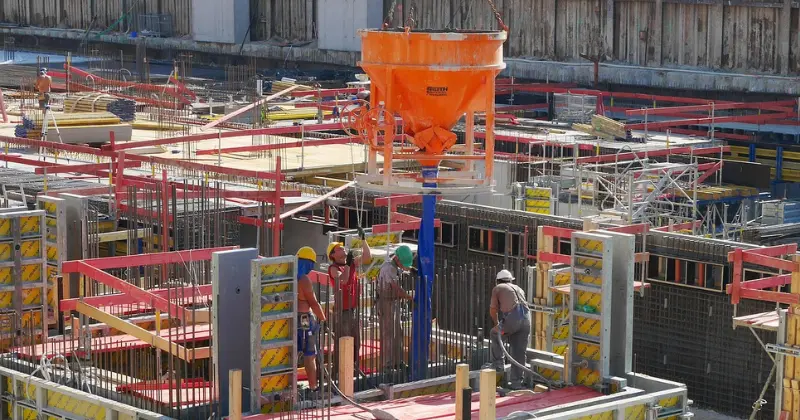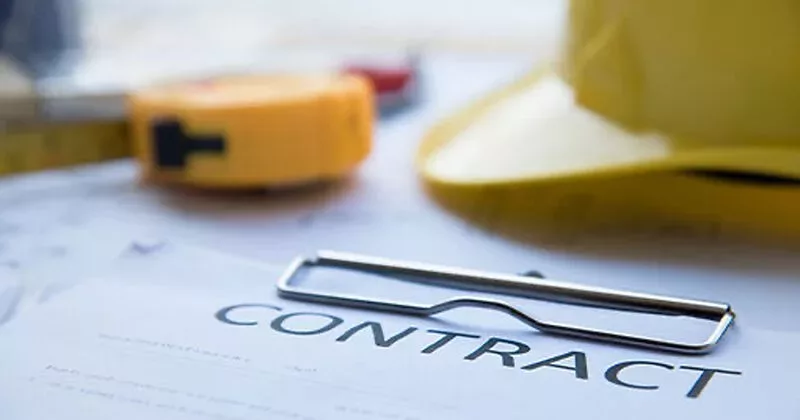11 mins read
Construction Safety Management: Key Challenges, Responsibilities, and Tips

Nothing is more important than worker safety and well-being. Construction safety management practices have continued to evolve, incorporating new methods and software tools to reduce risks while improving job satisfaction, efficiency, and compliance. To understand how these tools and innovations can be applied, it helps to take a step back and examine some of the common industry challenges and practices while asking: What is construction safety management and why is it important?
Keep reading to learn everything about it!
What Is Construction Safety Management?
Construction safety management is the process of systematically identifying and eliminating hazards and safety risks from job sites. This encompasses regulations, training, risk assessments, and inspections to maintain safe working environments.
With the dangers inherent to heavy equipment, outdoor environments, moving objects, and unfinished structures, construction sites can be dangerous workplaces. Site safety management practices apply a combination of tools to mitigate risks and promote a positive culture. OSHA defines the four pillars of safety as:
- Policies and objectives
- Risk management
- Safety assurance
- Safety promotion
These pillars are dynamic pieces of an ongoing process to improve workplace safety over time and learn from past experiences to identify and eliminate safety risks more effectively. For example, new policies might be created to define expected behaviors, while risk management assesses the severity and likelihood of each construction hazard.
With over 150,000 site accidents occurring yearly, continuous improvement is also necessary to protect both projects and workers. Safety assurance involves monitoring and assessing risk control measures so they can be improved over time, and promotion refers to the education of employees on safety issues to encourage discussion, build a safe culture, and mitigate the risks of construction site accidents.
Who is responsible for safety management?
Referring to construction site safety management as “everyone’s job” is an accurate and appropriate statement since each employee, construction project manager, contractor, and client plays an important role. Putting this into practice requires committed leadership, so many projects will designate an HSEQ manager to lead planning activities, perform audits, and ensure everyone is taking proper precautions. Additional responsibilities of the construction safety manager might include:
- Collaborating with project managers and contractors to develop safety plans
- Keeping track of the latest standards and regulations for their geography
- Drafting emergency response and disaster management plans
- Reviewing environmental and structural hazards that need attention
HSEQ managers often participate in training and certification programs to gain more in-depth expertise. This OSHA 30-Hour Construction Training Program is a popular option in the US, while safety managers in the UK might participate in NEBOSH Health and Safety Management for Construction training program.
Importance of Safety Management in the Construction Industry
Safety management is important because it protects workers from accidents and reduces fatalities by eliminating the greatest risks. It also helps to ensure compliance with legal regulations to avoid costly fines, delays, or shutdowns.
A safety culture helps attract and retain talented employees who value these practices and the positive working environments they foster. This, in turn, builds a positive brand image for construction companies with both clients and prospective employees. Additional benefits of a robust construction safety management system include:
- Lower insurance premiums and costs from workers’ compensation claims
- Increased construction productivity with fewer disruptions and distractions
- Improved quality with more organized, disciplined, and collaborative work practices
Common Challenges in Safety Management
Everyone wants to provide a safe working environment for their employees, and most workers want to maintain a sense of safety and security in their own careers. While the goal is undisputed, safety management in construction projects presents challenges that are not always easy to overcome.
Most workers can quickly recognize obvious hazards like malfunctioning equipment, slippery walkways or scaffolding, or exposed wiring. Everyday tasks that are performed repeatedly can be equally hazardous when inattentive or careless behavior intersects with dangerous tools and conditions.
Continuously shifting environments present additional challenges since factors like weather, employee turnover, and design changes ensure no two days are alike on the job site. Pressure to perform and complete tasks on time can be another complicating factor since rushing tasks or working to the point of exhaustion heightens the risk of accidents.
Workers who are fatigued are more likely to make errors that can lead to accidents, injuries, or fatalities. Complex job sites with many different crews working side by side are also prone to hazards and accidents when clear lines of communication and collaboration in construction projects are not established.
Tips for a Successful Construction Safety Management Plan

The construction safety management plan is a comprehensive, living document that outlines the most important aspects of the safety management program. Along with the four pillars defined by OSHA, the plan should emphasize practices and policies that are most likely to improve workplace conditions.
1. Create a safety policy
The terms policy and plan are sometimes used interchangeably, but a good safety policy serves as a focal point and centerpiece of the plan. The policy states the organization’s commitment to safety, the reasons why it is important, and the roles and responsibilities of each worker, along with a summary of the long-term strategy. A high-level policy sets the stage by defining goals and objectives. The body of the plan specifies in detail how these objectives will be met.
2. Get employee buy-in
The key to successful safety management is buy-in and participation from all employees as new practices are woven into the culture. Most construction roles have strong opinions or first-hand experience with safety issues, so one way to foster acceptance early on is by involving workers in the planning process and getting cross-functional feedback on the plan before it is released.
Employee involvement in the process should not stop once the plan is released and implemented. Safety committees that involve workers with differing roles and perspectives keep important issues on the table and continue to build on the themes of collaboration and employee involvement
3. Invest in PPE
According to OSHA, the proper use of PPE can prevent over 37% of occupational injuries and diseases. Head, foot, hand, eye, and respiratory protection is available to suit all manner of onsite tasks and conditions. Construction safety management training programs outlined in the plan should emphasize the proper use of PPE and what types are recommended for various scenarios. Training programs should also reinforce that PPE is intended to be the last line of defense and cannot overcome all hazardous conditions or bad decisions.
4. Emphasize open communication
Along with safety committees and other meetings, regular discussions (both formal and informal) are essential for site safety management, and this importance should be conveyed in the plan. Ongoing communication helps to reduce and prevent safety issues and hazards in construction by:
- Identifying and correcting issues in real time
- Fostering common safety practices among workers
- Reinforcing the accountability of each employee for their own environment
- Improving emergency reaction and response times
Construction personnel are more transparent and open with their observations when clear procedures and protocols to standardize issue reporting are included in the plan. Professional construction analytics software can help gather relevant data to ensure everyone is on the same page.
5. Create emergency plans
Planning for disasters is the best way to minimize their impact if and when they occur. Response plans for emergencies, including accidents, fires, natural disasters, and major equipment failures, should be documented in the construction safety management plan. To ensure these emergency response proposals will be utilized, all employees should be trained to understand their individual roles and responsibilities. Regular drills and simulations also help to identify any gaps or weaknesses in the plans. Having a well-thought-out construction risk management plan is also fundamental to achieving the expected levels of safety.
6. Utilize technology
Emerging technologies like IoT devices to remotely monitor construction sites, mobile devices, and apps to send hazard alerts in real-time, as well as wearable sensors to track worker position and status, are among the breakthrough digital construction technologies that continue to make projects and workers safer. Construction safety management software is another important tool that helps to streamline processes, track incidents, ensure compliance with safety regulations, and improve collaboration.
Conclusion
Construction safety management is one of many facets of the industry where new software tools and technological advancements are simplifying processes while improving worker satisfaction and retention. RIB software’s advanced suite of construction software solutions supports construction safety with industry-leading tools for centralized communication, streamlined document control, and risk management capabilities.
Trusted by over 23,000 companies in 100+ countries, RIB software empowers teams worldwide to optimize their construction practices. Get your demo today and start your journey towards next-level construction management!
Most Recent
11 mins read
10 mins read
10 mins read
29 mins read
Blog Categories

Ebook











